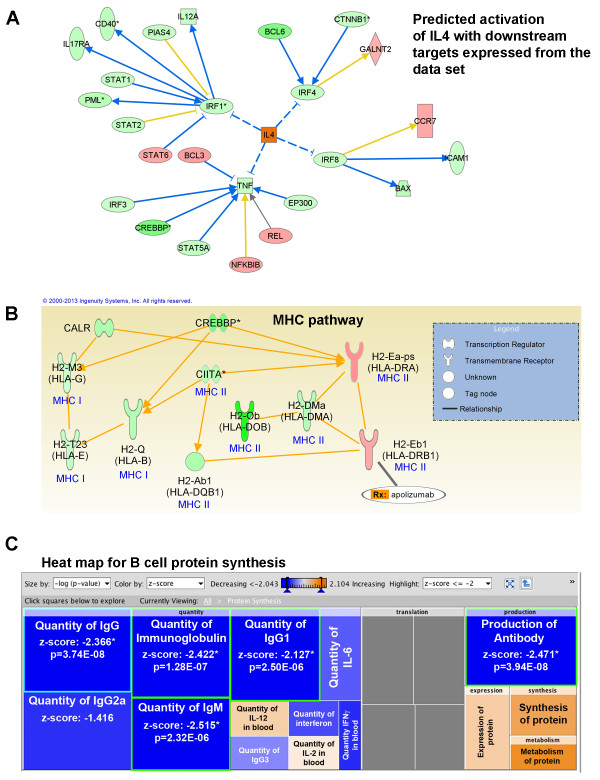Figure 5.
Repetitive hypoxic preconditioning suppresses adaptive immune responses in resident B cells prior to stroke. (A) Microarray analysis predicted a repetitive hypoxic preconditioning (RHP)-induced activation of IL-4 in B-T cell interactions to suppress downstream transcriptional regulators interferon regulatory factor (IRF)1, IRF4, and IRF8 and the cytokine TNF. Downstream molecules are coded for upregulation (red) and downregulation (green) according to expression in the data set. Blue lines lead to inhibition, whereas yellow lines indicate interactions inconsistent with the state of the downstream molecule. (B) Major histocompatibility complex (MHC)-related transcription and receptor responses in RHP-treated B cells. All molecules shown are significantly downregulated (green) or upregulated (red) by RHP and are identified by gene name with the human homolog in parentheses below. (C) Heat map showing downregulated (blue) and upregulated (orange) biological function pathways related to protein synthesis, including antibody production, in RHP-treated B cells compared to untreated control mice. Significance is only shown for pathways with z-score > −2. All significance and graphs generated by Ingenuity Pathway Analysis software.

